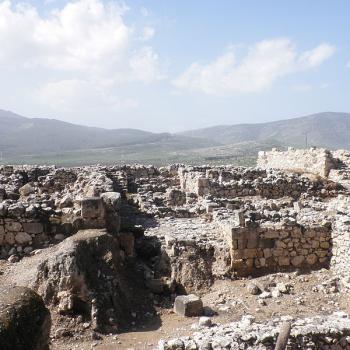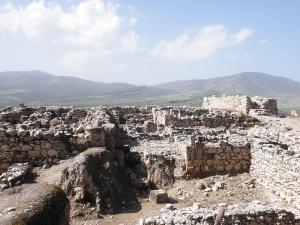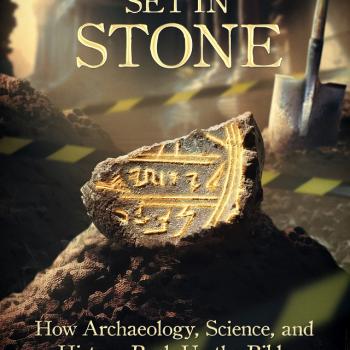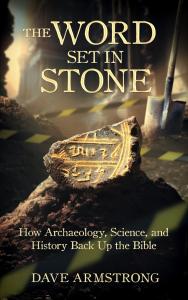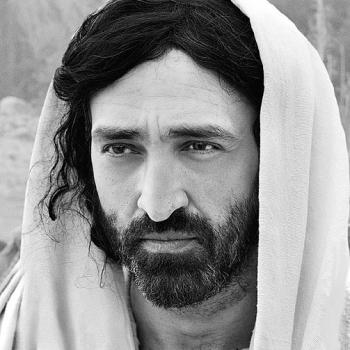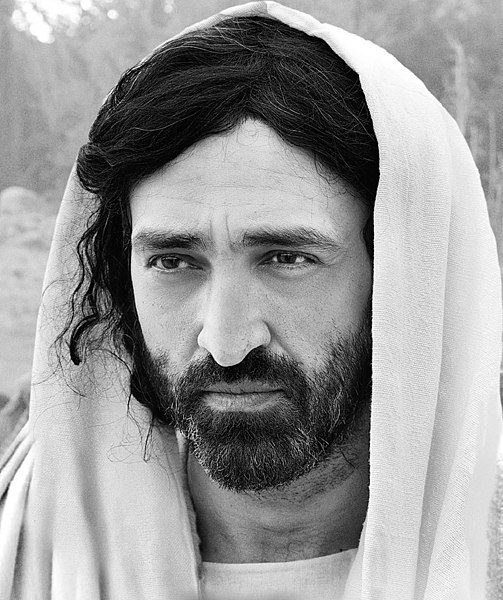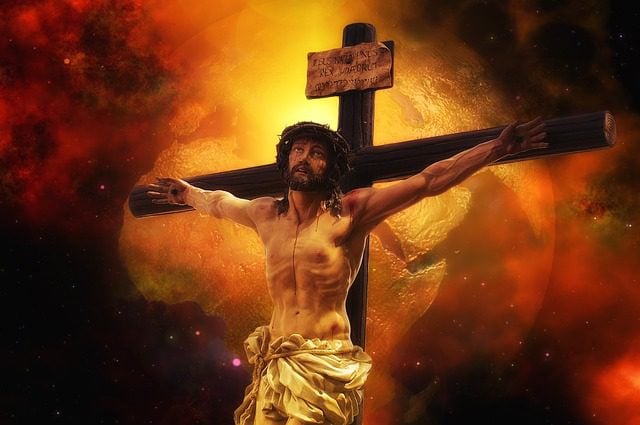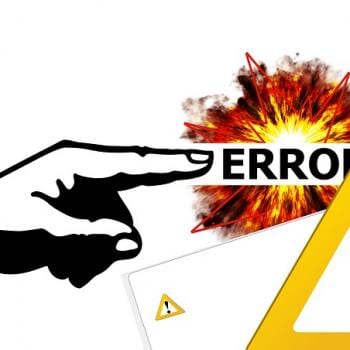I will be resolving all of the alleged “contradictions” from the web page entitled “194 CONTRADICTIONS, New Testament.” It’s perpetually striking to observe how many of these are obviously not logical contradictions, and how very easy they are to refute (many being patently and evidently absurd). A few here and there do seem to be genuinely perplexing (at first glance) and require at least some thought and study and serious examination (they save my patience). But all are ultimately able to be (in my humble opinion) decisively resolved. Readers can decide whether I succeed in my task or not, in any given case. My biblical citations are from RSV. The words from the web page above will be in blue.
See further installments:
Refutation of 194 Biblical “Contradictions” (#1-25) [4-5-22]
Refutation of 194 Biblical “Contradictions” (#26-50) [4-6-22]
Refutation of 194 Biblical “Contradictions” (#51-75) [4-7-22]
Refutation of 194 Biblical “Contradictions” (#101-125) [4-8-22]
Refutation of 194 Biblical “Contradictions” (#126-150) [4-9-22]
Refutation of 194 Biblical “Contradictions” (#151-175) [4-11-22]
Refutation of 194 Biblical “Contradictions” (#176-194) [4-11-22]
*****
76. At the Mount of Olives, Jesus told Peter he would deny him three times. Mt.26:30-34.
At the Passover meal, Jesus told Peter he would deny him three times. Lu.22:13,14,34.
John Oakes, of the excellent Evidence for Christianity site, answers:
There is no contradiction here. MML & J all agree that the scene occurred at the end of the Lord’s Supper scene. Perhaps it happened as they were leaving as a little side conversation. That fits the description. By the way, the Mount of Olives is where the Garden of Gethsemane is. So, when Matthew and Mark say that after they sang, they went to the Mount of Olives, it could just as well have said that after the song they went to the Garden of Gethsemane. It is a little different that M & M say after the song they left for the Mt. of Olives, then describes the three rooster conversation, then has them actually travel to the Mount of Olives. My only thought is that perhaps all got up to go, then Jesus had the little conversation with Peter as they were preparing to leave for the Mount of Olives after the formal Seder service had ended. What is unanimous in all four gospels is that the more private conversation between Jesus and Peter happened at the end of the Seder meal, before they reached the Mt. of Olives. (“Did Jesus tell Peter he would deny him at the Mt. of Olives (Mark, Matthew) or during the Last Supper (Luke and John)?”, 4-16-12)
77. Peter was to deny Jesus before the cock crowed. Mt.26:34; Lk.22:34; Jn.13:38.
Peter was to deny Jesus before the cock crowed twice. Mk.14:30.
78. The cock crowed once. Mt.26:74.
The cock crowed twice. Mk.14:72.
Note that Mark’s second crow is after a first one, with a gap of time. This is key to understanding the non-contradiction. RSV doesn’t indicate when the first crow occurred, but KJV, utilizing a different (later, inferior) manuscript, has it after the first denial (14:68). Then after his third denial, the Gospel of Mark reads “And immediately the cock crowed a second time” (14:72). This alleviates any supposed difficulty, because it’s not a matter of “one crow only” vs. “two crows in a row at one time” (after the third denial).
Rather, we must note what each Gospel was specifically referring to. Matthew, Luke, and John all refer to what Mark states is the second crow: that occurred after Peter’s third denial. But none of the three states that this particular crow is the “only” one. Therefore, it’s not contradictory. Nor does it become one simply because three gospels didn’t mention an additional earlier crow made after the first denial (the fallacy of argument from silence).
79. Peter makes his first denial to a maid and some others. Mt.26:69,70.
It was only to the maid. Mk.14:66-68; Lk.22:56,57; Jn.18:17.
Matthew has him answering the maid, while others nearby also hear. We would expect this, since it was within a group of people, including “bystanders” (Mt 26:73; Mk 14:70) and “servants and officers” (Jn 18:18). He wasn’t responding to them, but to the maid.
If I was talking to my wife (say about some car repairs) and one or more of my four children (or now, grandchildren) are also listening, no one would say that I was replying — or talking to — to all of them, when I was responding only to my wife. Nor if I were riding a bus with a friend and rather vehemently stated, “I’m not a Democrat!” others will also hear, but nevertheless, it’s silly to think that I was replying to them. That’s how foolish and desperate this so-called “contradiction” is.
But in fact, Mark, Luke, and John also make it apparent that others heard, too (while they weren’t being replied to). They all mention that Peter was by a fire warming himself, with others, when he replied to the first maid (Mk 14:67-68; Lk 22:55-56; Jn 18:17-18). Obviously, then, the others around the fire would also have heard his reply. Matthew is the only one that didn’t mention the fire. But none of this is a contradiction in the slightest. Much ado about nothing.
80) Peter’s second denial was to another maid. Mt.26:71,72.
It was to the same maid. Mk.14:69,70.
It was to a man and not a maid. Lk.22:58.
It was to more than one person. Jn.18:25.
(81) Peter’s third denial was to several bystanders. Mt.26:73,74; Mk.14:69,70.
It was to one person. Lk.22:59,60.
It was to a servant. Jn.18:26,27.
Matthew specifies “a maid” (26:69), “another maid” (26:71), and “bystanders” (26:73). In the latter instance, a direct quote is given, so it is likely from just one of them, as they would not — obviously — all say in unison exactly the same words.
In Mark it is “one of the maids of the high priest” (14:66), “the maid . . . began again to say” (14:69), and “the bystanders” (14:70), again with a direct quote for the latter, suggesting that only one person said it. The only possible difference with Matthew is whether it was the same maid or a second one in the second instance. Expositor’s Greek Testament offers a solution (which occurred to me as well):
[I]t means the maid on duty in that particular place, the forecourt . . . Peter was a second time spoken to (or at) on the subject of his connection with Jesus, [as opposed to it being] the same person [who] spoke in both cases.
If this is the case (and the grammar permits it as a possibility), then “again” would have the meaning of “in addition to the first maid.”
Luke says it was “a maid” (22:56), “some one else” (22:58), and “still another” (22:59). That’s perfectly consistent with both Mark and Luke, provided my explanation for the “second maid” in Mark is accepted.
John has “The maid who kept the door” (18:17). Thus all four specify a maid in the first instance. Then John has “They” (with an exact quotation: 18:25), which can be an unspecified second maid (per Matthew and Mark), and the third inquiry in John was from “One of the servants of the high priest, a kinsman of the man whose ear Peter had cut off” (18:26). This is a specified person, which is consistent with a “bystander” (Matthew and Mark) and “still another” (Luke). Taking all four accounts together, we arrive at the following specific conclusions as to the identity of the three questioners:
1) “one of the maids of the high priest” / “The maid who kept the door” (Mk 14:66 and Jn 18:17)
2) “another maid”: perhaps of the forecourt (Mt 26:71)
3) “One of the servants of the high priest, a kinsman of the man whose ear Peter had cut off” (Jn 18:26)
As demonstrated, then, there is no inconsistency across the four accounts in this regard. Some descriptions are merely more vague. If I’m called by four different people, “a man”, “a Catholic apologist”, “Dave”, and “a guy raised in Detroit” this is not contradictory at all, as all four descriptions are true statements. The one point that might be suspected to be a contradiction (Mk 14:69) has a perfectly plausible explanation. So, nice try again, but no cigar . . .
82) The chief priests bought the field. Mt.27:6,7.
Judas bought the field. Acts 1:16-19.
The Truth in Faith website offers an excellent rebuttal:
[W]ho purchased the field directly? The chief priests did. Matthew focuses on how they were even being wickedly pious with the money Judas threw back at them (i.e. They said it would not be lawful to put it back in the treasury of the Temple…as if they were being holy). The difference between Matthew’s account and Luke’s in Acts is answered by saying that in Mathew’s account he shows us the chief priests, and not Judas, directly purchased the field. They literally directly used the money to acquire the field.
Then in Luke’s account his focus is not on the chief priests as they are not even mentioned here. Rather Luke’s focus is on the Apostles’ recounting how they were minus one Apostle, Judas. So he notes that Judas was gone, because he acquired this field with blood money and hung himself. I believe Luke’s version is showing us that while in Matthew’s version the chief priests directly purchased the field, Luke puts the focus on that it was Judas’ wickedness that indirectly purchased the field. . . .
Do you wish to know who literally bought the field with money? This was the chief priests who conducted themselves wickedly as Matthew catalogs in his Gospel. Do you wish to know how it was though the field came to be purchased? This was due to Judas Iscariot’s wickedness and betrayal of Christ as Luke catalogs in his treatise. This is not a contradiction, it is rather two witnesses of the same event focusing on two different subjects and their actions which both lead to the same outcome (the purchase of the Field). . . .
You could say both Judas and the chief priests purchased the field and be right in both senses. How? Because the money can both be said to be Judas’ and the chief priests. The money was given to Judas for his services in leading Jesus to be arrested. So it was payoff that belonged to Judas. Yet Judas gave it back to the chief priests in remorse, so then it also belonged to the chief priests. This is not a contradiction, it is a two angles of the same story being given by two different writers of Scripture that had two different focuses in how they shared the story. Both are true, and both have different lessons to show from the one story. (“Who Purchased the Field of Blood?”)
I also supplied an answer to this (citing someone else) in my paper, Resurrection #24: Judas & the Potter’s Field (5-3-21).
83) Judas threw down the money and left. Mt.27:5.
Judas used the coins to buy the field. Acts 1:18.
See, Resurrection #19: When Was Judas Paid? [4-30-21]
84) Judas hanged himself. Mt.27:5.
Judas fell headlong and burst his head open. Acts 1:18.
This is one of the “classics.” I’ve dealt with it twice:
Death of Judas: Alleged Bible Contradictions Debunked [9-27-07]
Resurrection #23: How Did Judas Die? [5-3-21]
85) Jesus did not answer any of the charges. Mt.27:12-14; Lk.23:9.
Jesus answered some of the charges. Mk.14:61,62.
Jesus answered all of the charges. Jn.18:33-37.
In Matthew 27:11, right before the passage above, Jesus answered Pilate’s question: “Are you the King of the Jews?” by saying, “You have said so”: which was another way of saying “yes” (see my reply to #75 in my previous installment). It’s not mentioned above that Matthew 27 dealt with Jesus’ second appearance before the high priest, scribes, and elders: on the morning of the day of His crucifixion.
The previous meeting / monkey trial was the night before, and He definitely answered the question of the high priest (“I adjure you by the living God, tell us if you are the Christ, the Son of God.”: 26:63), by saying, “You have said so. But I tell you, hereafter you will see the Son of man seated at the right hand of Power, and coming on the clouds of heaven” (26:64).
But in the second meeting, He didn’t answer them (27:12). Why bother? They had already concluded He was a blasphemer, worthy of death, the night before. There was nothing left to talk about, from Jesus’ perspective. Jesus had already said what He needed to say, to bear witness to Himself.
In Luke 23:9, we learn that Jesus didn’t answer Herod. Mark 14:61-62 records Jesus giving essentially the same answer to the high priest that Matthew records in 26:64. Thus far, no contradiction at all. John 18 is about Jesus’ replies to Pontius Pilate. He responded with a rhetorical question regarding being King of the Jews, and then two “straight answers” about the same thing, which are perfectly harmonious with Matthew 27:11.
So where, pray tell, is the contradiction? Why is this nonsense even brought up at all? Two of the passages are about the same answer to the high priest. A third is about Jesus not answering Herod (apples and oranges). A fourth is about a short discussion with Pilate. “Apples and oranges” and no contradiction again. Zero, zilch, zip, nada . . . “Objections” like this one are an insult to everyone’s intelligence. But it’s been firmly refuted for the record, and that is worth the twenty minutes I spent on it.
86) Jesus said that eternal life would be given to all that were given to him. Jn.11:27-29; Jn.17:12.
Jesus released Judas in order to keep this promise. Jn.18:5-9.
In John 11:26 Jesus said, “whoever lives and believes in me shall never die.” Judas simply stopped believing in Him. In John 17:12 Jesus states: “While I was with them, I kept them in thy name, which thou hast given me; I have guarded them, and none of them is lost but the son of perdition, that the scripture might be fulfilled.” Thus the first statement above is false: Judas was “given” to Jesus but he fell away and was lost. Judas Iscariot was the exception to the rule of faithful disciples.
Jesus knew, of course, from the beginning that Judas would fall away and betray Him. In John 18:9 Jesus says, “Of those whom thou gavest me I lost not one.” He didn’t “lose” Judas. Judas brought about his own loss of salvation and damnation. I see no contradiction here. It’s straining at gnats in a futile effort to try to come up with one. So far it’s a 0 for 86 record: not very impressive.
87) The chief priests and elders persuade the people. Mt.27:20.
Only the chief priests persuade the people. Mk.15:11.
The chief priests and the people persuade themselves. Lk.23:13-23.
This had to do with asking for the release of Barabbas rather than Jesus. It’s an argument from silence, and they never prove anything. Mark doesn’t say that “Only the chief priests” persuaded the people. Thus the above characterization is a misrepresentation of the biblical text. Mark wrote that “the chief priests stirred up the crowd”. Yes they did; so did the elders. The lack of an exclusive term like “only” in Mark accounts for the difference between a contradiction and two complementary statements. This is an example of the latter.
Reading the three stories side-by-side, we see that the priests and elders seek to persuade the people to release Barabbas. Mark mentions only one (so what?: it’s an argument from silence). After that, (in Luke) Pilate calls them and the common people together to find out who they want released. It’s all perfectly harmonious.
Logic 0101. Please pray for these folks to take a course in logic for their own good! :-) And please add a prayer for my patience and longsuffering, too, if you could. I still have 107 of these silly pseudo-“objections” to go, and will need tons of patience — only by God’s grace — to endure the relentless illogic and “anti-logic” again and again. But I press on. My patience has survived 87 assaults; I’ll get to the end. Thanks so much for any prayers offered!
88) Jesus is given a scarlet robe. Mt.27:28.
Jesus is given a purple robe. Mk.15:17; Jn.19:2.
Jesus is given a gorgeous robe. Lk.23:11.
Eric Lyons of Apologetics Press aptly explains:
According to A.T. Robertson [Word Pictures in the New Testament], there were various shades of purple and scarlet in the first century and it was not easy to distinguish the colors or tints. (“Was the Robe Placed on Jesus Scarlet or Purple?”, 26 May 2004)
One historical example illustrates this “spectrum” of colors:
The early Christian church adopted many of the symbols of the Roman Empire, including the importance of the color scarlet. . . . By a church edict in 1295, Cardinals of the church, second in authority to the Pope, wore red robes, but a red closer in color to the purple of the Byzantine Emperors, a color coming from murex, a type of mollusk. After the fall of Constantinople to the Turks in 1453, however, the imperial purple was no longer available, and Cardinals began instead to wear scarlet made from kermes. (Wikipedia, “Scarlet (color)” )
One can easily understand people variously describing these Cardinals’ robes from 1295 to 1453, as scarlet or red or purple. I’ve gotten into friendly disputes several times with my daughter about what color something was. We simply saw it differently. The Gospel writers were human like the rest of us. Color can be a very subjective thing. I’ll now cite several commentaries on Matthew 27:28:
Here again we have a technical word, the chlamys or paludamentum, used for the military cloak worn by emperors in their character as generals, and by other officers of high rank (Pliny, xxii. 2, 3). St. Mark and St. John call it purple (Mark 15:17; John 19:2); but the “purple “of the ancients was “crimson,” and the same colour might easily be called by either name. (Ellicott’s Commentary for English Readers)
The ancients gave the name “purple” to any color that had a mixture of “red” in it, and consequently these different colors might be sometimes called by the same name. (Barnes’ Notes on the Bible)
Scarlet was the proper colour for the military chlamys. . . . St Mark has the less definite “purple;” St John “a purple robe.” Purple, however, is used by Latin writers to denote any bright colour. (Cambridge Bible for Schools and Colleges)
Luke 23:11 is a different incident altogether: involving Herod‘s soldiers, whereas the other three are about Pilate’s Roman soldiers mocking Jesus. So Luke 23:11 is completely irrelevant to this discussion (and even if it was, it mentioned no color). The use of both “purple” and “scarlet” has been quite adequately explained.
89) The sign says, “This is Jesus the King of the Jews”. Mt.27:37.
The sign says, “The King of the Jews”. Mk.15:26.
In three languages, the sign says, “This is the King of the Jews”. Lk.23:38.
In the same three languages, the sign says, “Jesus of Nazareth, the King of the Jews”. Jn.19:19,20.
The Domain for Truth site tackles this one:
- While noting what are the differences we must also ask what is the same in all four verses. In the Greek all four verses from all four Gospels in the New Testament had the exact Greek phrase “Ο ΒΑΣΙΛΕΥΣ ΤΩΝ ΙΟΥΔΑΙΩΝ.” Ο ΒΑΣΙΛΕΥΣ ΤΩΝ ΙΟΥΔΑΙΩΝ translated means “the king of the Jews.”
- Both Matthew 27:37 and Luke 23:38 record Οὗτός while both Mark 15:26 and John 19:19 account does not mention the word Οὗτός. The Greek word Οὗτός is a demonstrative pronoun meaning “this.” However Matthew 27:37 and Luke 23:38 does not contradict Mark 15:26 and John 19:19 even though Mark 15:26 and John 19:19 does not mention “this.” Mark 15:26 and John 19:19 would be contradicting Matthew 27:37 and Luke 23:38 if the former mentioned that there were not Οὗτός in the inscription. But Mark 15:26 and John 19:19 doesn’t say that. If I can put it in a way that the skeptic might understand the absence of Οὗτός in both Mark 15:26 and John 19:19 should not be taken as evidence of the absence of Οὗτός in the inscription especially when other accounts mentioned it.
- The same reasoning in point 4 applies to the Greek word ΙΗΣΟΥΣ. ΙΗΣΟΥΣ is the Greek word for “Jesus.” “Jesus” appears in both Matthew 27:37 and John 19:19 but does not appear in Mark 15:26 and Luke 23:38. Again we do not actually have a contradiction here for the absence of the name of Jesus does not mean it is an evidence of absence of the name in the inscription when other accounts mentioned it.
- In contrast to the Synoptic Gospel only the Gospel of John mentioned that the inscription mentioned Jesus was from Nazareth. Again, remember the reasoning explained in point 4 that the silence of some verses is not the same thing as a denial that the inscription does not contain the word “Nazareth,” which would be the requirement that needs to be fulfilled in order for it to actually be a Bible contradiction.
- Just because some of the writers of the Gospels shortened the inscription that does not mean it is a problem. People today do the same thing all the time in summarizing what is written. . . .
- John 19:20 also mentioned that the inscription above the crucified Jesus was written in “Hebrew, Latin and in Greek.” There’s nothing that demanded the Roman soldiers to write each language exactly the same. . . . it is possible that there are further reasons why we do not have Bible contradictions going on here since the four Gospels might have reported on the inscriptions as written in different languages. Thus we would not be surprised that some passages have the stative verb “is” while others do not, and other verses mentioned Nazareth while others do not, etc. (“Bible Contradiction? What did the sign over Jesus’s head say?”, 3-21-17; in the original, the section numbers were 3-7, and 9)
90) Jesus asks God, The Father, why he has forsaken him. Mt.27:46.
Jesus said that he and The Father were one in the same. Jn.10:30; Jn.17:11,21,22.
Jesus and God the Father are both God: two Persons of the Holy Trinity. This is correct. The attempted “contradiction” contends that if Jesus felt “forsaken” by His Father, then they couldn’t have been one after all. Catholic Answers: the largest Catholic apologetics organization in the world, offers a cogent reply:
If someone were to say, “I pledge allegiance to the flag” or “Our Father who art in heaven,” most people could either finish the quotation or prayer or at least understand the ideas being expressed. That is because certain quotations in our culture, whether secular or religious, are known and even memorized because of their importance.
This was true of the psalms in Jesus time. He needed only to say the first line, and most Jews would have known the rest, or at least the message.
Jesus was quoting Psalm 22, a messianic psalm that vividly describes the agony the suffering servant would endure. God the Father did not abandon his Son in his Son’s suffering but allowed him in his humanity to experience the sense of divine abandonment that humans often feel during times of need, and especially when in sin. Just as we often feel that God has abandoned us when we are suffering (even though this isn’t the case), so the Son of God in his humanity experienced that aspect of human suffering as well. He died for our sins, and the weight of those sins—and thus the feeling of abandonment—must have been exceedingly heavy at that point.
By quoting this psalm, Jesus shows that he is the fulfillment of that prophecy and that he will be vindicated, which is evident in the psalm’s triumphant ending. (“Did God the Father Abandon His Son?”)
Some of the “triumphant” passages in the second half of this Psalm show clearly that Jesus wasn’t expressing a total abandonment at all:
Psalm 22:24 For he has not despised or abhorred the affliction of the afflicted; and he has not hid his face from him, but has heard, when he cried to him.
Psalm 22:26 The afflicted shall eat and be satisfied; those who seek him shall praise the LORD! . . .
Karlo Broussard, from the staff of Catholic Answers, adds more related information:
Jesus doesn’t despair and God doesn’t abandon him. Jesus’s death on the cross, which he freely accepts (John 10:18), is a means to an end: the manifestation of God’s power over his enemies and the drawing of the peoples of the earth into relationship with God.
Here are two ways that we can further support this interpretation.
First, Psalm 22 is not the only psalm with prophetic overtones that Jesus cites while on the cross. He also cites Psalm 31:5 when he cries in Luke 23:46, “Father, into thy hands I commit my spirit!” Like Psalm 22, Psalm 31 expresses an affliction that is similar to what Jesus is experiencing:
I am the scorn of all my adversaries, a horror to my neighbors, an object of dread to my acquaintances; those who see me in the street flee from me. I have passed out of mind like one who is dead; I have become like a broken vessel. Yea, I hear the whispering of many—terror on every side!—as they scheme together against me, as they plot to take my life (vv.11-12).
Despite the affliction, the psalmist expresses trust and hope for deliverance: “But I trust in thee, O Lord, I say, ‘Thou art my God.’ My times are in thy hand; deliver me from the hand of my enemies and persecutors!” (vv.14-15). And later the psalmist blesses the Lord for hearing his prayer: “Blessed be the Lord, for he has wondrously shown his steadfast love to me . . . thou didst hear my supplications, when I cried to thee for help” (vv.21-22).
By citing this psalm, Jesus sees his suffering as fulfilling the affliction that the Psalmist describes. He also knows that God will follow through on his promise of deliverance.
Given this citation of Psalm 31:5, we can conclude that Jesus cites Psalm 22 to the same end: he’s living out the affliction that the Psalmist describes and he knows that God will deliver him. Thus, the cry is not one of despair due to God abandoning him, but an expression of hope for deliverance. . . .
[W]e can be sure that Jesus’s cry was not an expression of despair. It was actually the opposite: an expression of hope in God’s deliverance through the resurrection and an expression of desire for the salvation of the world. (“Did the Father Forsake Jesus?”, 4-18-19)
91) The centurion says, “Truly this was the son of God”. Mt.27:54.
The centurion says, “Truly this man was the son of God”. Mk.15:39.
The centurion says, “Certainly, this was a righteous man”. Lk.23:47.
There was no centurion. Jn.19:31-37.
The centurion could have said all those things. The Synoptics simply report them a little differently (as we routinely expect from different reports of the same thing; this is actually a mark of truthfulness and trustworthiness, not inaccuracy), but they are harmonious and not contradictory. We must always keep in mind the logical principle expressed in #89 above: “the silence of some verses is not the same thing as a denial.”
John’s not mentioning a centurion who said this is no evidence that it didn’t happen. It’s only evidence that either: 1) he didn’t recall it, or 2) his sources were not aware of it or 3) he decided not to include it, if he knew of it, for whatever reason. But it doesn’t annihilate the report of the other three Gospels, because it doesn’t deny their report, which would actually be a contradiction.
No problem here!
92) Jesus was crucified at the third hour. Mk.15:25.
Jesus was still before Pilate at the sixth hour. Jn.19:13,14.
The late great Protestant apologist Norman Geisler answers this charge:
Both Gospel writers are correct in their assertions. The difficulty is answered when we realize that each Gospel writer used a different time system. John follows the Roman time system while Mark follows the Jewish time system.
According to Roman time, the day ran from midnight to midnight. The Jewish 24 hour period began in the evening at 6 p.m. and the morning of that day began at 6 a.m. Therefore, when Mark asserts that at the third hour Christ was crucified, this was about 9 a.m. John stated that Christ’s trial was about the sixth hour. This would place the trial before the crucifixion and this would not negate any testimony of the Gospel writers. This fits with John’s other references to time. For example, he speaks about Jesus being weary from His journey from His trip from Judea to Samaria at the “sixth hour” and asking for water from the woman at the well. Considering the length of His trip, His weariness, and the normal evening time when people come to the well to drink and to water their animals, this fits better with 6 p.m., which is “the sixth hour” of the night by Roman time reckoning. The same is true of John’s reference to the tenth hour in John 1:39, which would be 10 a.m., a more likely time to be out preaching than 4 a.m. (“Was Jesus Crucified in the Third Hour or the Sixth Hour?”, Defending Inerrancy, 2014, from a book published in 1992)
93) The women looked on from “afar”. Mt.27:55; Mk.15:40; Lk.23:49.
The women were very close. Jn.19:25.
I agree that the Synoptics report onlookers being “afar off” (KJV) or at a “distance” (RSV). If tradition is correct, we know the spot where they stood, and I stood on it in the Church of the Holy Sepulchre in Jerusalem in October 2014. My rough estimate is that it was about half of a football field away (150 feet). This is consistent with the biblical “afar” or at a “distance.”
Only the Gospel of John reports Jesus’ mother having been at the crucifixion. And it’s the only Gospel that alludes to one of the disciples — John Himself — being there. It appears to have been a report of a different occurrence from what the Synoptics detail. We have no time frame given. We know that Jesus’ agony and death on the cross took about six hours.
In fact, we have some possible clues about the time of each described observance. In terms of the order of things mentioned in the text, Mark refers to the female onlookers three verses (15:40) after He notes Jesus’ death (15:37). It’s not proof, but it’s a hint or indication that they were there at the time of His death. Matthew utilizes the same order of report: Jesus’ death (27:50) / description of the women (27:55-56). It’s the same again in Luke: Jesus’ death (23:46) and noting the women and other “acquaintances” present (23:49).
John, on the other hand, seems to place his scene shortly after Jesus was nailed to the cross, since he talks about the soldiers dividing up Jesus’ garments: “When the soldiers had crucified Jesus they took his garments and made four parts” (19:23) and right after mentioning that, he describes “his mother, and his mother’s sister, Mary the wife of Clopas, and Mary Mag’dalene” who were “standing by the cross” (19:25), along with John himself (19:26).
Where there is overlap of mentioned women (present near the cross and at a “distance”), it’s still not undeniably contradictory, since that would require variant assertions of a person being in two different places at a given particular time or the entire time. For example, Mary Magdalene was mentioned as being close to the cross with Mary the mother of Jesus, and further off (in Matthew and Mark). She would simply have moved (possibly being forced to move by the Roman soldiers) from one place to the other: perhaps earlier by the cross and later (up to the time of Jesus’ death) at a distance.
An actual logical contradiction regarding our topic would be if some verses describing the crucifixion stated that all of the female onlookers (whether Mary, the mother of Jesus is mentioned by name or not) were without exception, always standing at a distance, the entire time of the crucifixion, while John 19:25 taught that Mary, Jesus’ mother stood near the cross. That’s an actual contradiction. There are a number of scenarios that can be imagined that would be undeniably contradictory.
My explanation is not in the least inconsistent with all the relevant texts considered together. Nothing in those texts would preclude such a theory, which is not implausible at all. Two different things were being recorded: observance from afar, and observance much closer to the cross. And even overlap of the women mentioned is not a contradiction unless the claims contradict and are incoherent and confused with regard to the specific times and locations involved.
94) The last recorded words of Jesus were:
Version 1: “Eli, Eli …My God, My God why have you forsaken me” Mt.27:46.
Version 2: “Eloi, Eloi…My God, My God why have you forsaken me” Mk.15:34.
Version 3: “Father, into your hands I commend my spirit”. Lk.23:46.
Version 4: “It is finished”. Jn.19:30.
Matthew doesn’t present these as Jesus’ last words, because four verses later it states: “And Jesus cried again with a loud voice and yielded up his spirit” (27:50). Luke provides the actual words He said when He “yielded up his spirit” and we know that those were His last words because in the same verse (Lk 23:46) it immediately adds: “And having said this he breathed his last.” Mark adds in 15:37: “And Jesus uttered a loud cry, and breathed his last.” This is perfectly harmonious with Luke 23:46 as well, which also noted that Jesus was “crying with a loud voice.”
All three Synoptics have Jesus talking loud and then dying. Luke provides the actual words. This is not a contradiction! John reads: “When Jesus had received the vinegar, he said, ‘It is finished’; and he bowed his head and gave up his spirit.” Here all we need do is note that Jesus said one more thing before He “gave up his spirit”: as all the Synoptics agree. Luke’s “having said this” strongly indicates that He died right after having said, “Father, into thy hands I commit my spirit!” The absence of these words in three Gospels is not contradictory. They’re all harmonious.
Our beloved critic could have figured all this out if he did the slightest amount of analysis of all these passages. This ain’t calculus or nuclear physics.
95) A guard was placed at the tomb the day after the burial. Mt.27:65,66.
No guard is mentioned. Mk.15:44-47; Lk.23:52-56; Jn.19:38-42.
The argument from silence doesn’t prove anything, and saying nothing about a particular event can’t possibly be contradictory to statements about said event because it has no content. Mark, Luke, and John would have to state something like “no guard was ever placed at the tomb” for this to be a real contradiction. And of course, they do no such thing. So it’s yet another pseudo-, bogus “contradiction.”
96) Only those keeping the words of Jesus will never see death. Jn.8:51.
Jesus’ disciples will be killed. Mt.24:3-9.
All men die once. Heb.9:27.
John 8:51 refers to spiritual death: that is, damnation and the punishment of hell due to rejection of Jesus and rebellion. We know this from many cross-references in John that make it clear what Jesus is referring to: eternal life as a result of repentance and being His disciple. Especially relevant is John 5:24: “. . . he who hears my word and believes him who sent me, has eternal life; he does not come into judgment, but has passed from death to life.”
Yes, some of Jesus’ disciples will be killed (meaning physical death). Since that is not what John 8:51 was talking about, no contradiction exists between the two passages, nor between John 8:51 and Hebrews 9:27, which is also pertaining to physical death. Easy solution . . .
97) Upon their arrival, the stone was still in place. Mt.28:1 2.
Upon their arrival, the stone had been removed. Mk.16:4; Lk.24:2; Jn.20:1.
It is readily observed also that the women saw the stone already rolled away when they arrived, as reported in Mark 16:4, Luke 24:2, and John 20:1. So how does the believer in biblical inspiration explain away what seems at first glance to be a glaring contradiction in Matthew’s account? Well, as is often the case and necessity, one has to examine the Greek word(s) involved and also the tense. Christian apologist Erik Manning presented these texts and then explained:
[L]et’s reconsider what Matthew says. We’re introduced to the passage about the angel by the Greek participle γὰρ (gar). Strong’s Greek Concordance defines it as: “For. A primary participle; properly, assigning a reason.” In other words, it exists to explain the earthquake and set of circumstances as the women found them.
As philosopher Tim McGrew points out, “Matthew uses an aorist participle, which could be (and in some versions is) translated with the English past perfect: “… for an angel of the Lord had descended …” (“Do The Resurrection Narratives Contradict?”, 4-6-20)
With this knowledge, let’s look to see how several Bible translations make this meaning of “happened in the past” more clear in Matthew 28:2:
Weymouth: . . . there had been a great earthquake; for an angel of the Lord had descended from Heaven, and had come and rolled back the stone, . . .
Young’s Literal Translation: . . . for a messenger of the Lord, having come down out of heaven, having come, did roll away the stone . . .
New American Standard Bible: And behold, a severe earthquake had occurred . . .
Amplified Bible: And a great earthquake had occurred, . . .
Williams: Now there had been a great earthquake . . .
Wuest: . . . an angel of the Lord having descended out of heaven and having come . . .
It’s true that this is a minority of translations, but this is significant, and shows that such a rendering is quite possible and permissible, according to the informed and educated judgment of these language scholars / translators. Moreover, the translations of Young, Wuest, and the Amplified Bible were specifically designed to bring out the precise and exact meaning of the Greek, including the sense of tense. This was their guiding principle in translation. It’s also notable that in the notes of the translators of the famous King James Version, it’s acknowledged that a valid alternate reading was “had been.”
Many commentaries also agree with this “past tense” understanding: thus showing that it is neither “fringe” nor simply apologetic special pleading; it is present in the text, according to them, and the translators noted above:
Barnes’ Notes on the Bible: There was a great earthquake – Rather there “had been.” It does not mean that this was while they were there, or while they were going, but that there “had been” so violent a commotion as to remove the stone.*Jamieson-Fausset-Brown Bible Commentary: And, behold, there was—that is, there had been, before the arrival of the women. . . . And this was the state of things when the women drew near. Some judicious critics think all this was transacted while the women were approaching; but the view we have given, which is the prevalent one, seems the more natural.*Gill’s Exposition of the Entire Bible: And behold there was a great earthquake,…. Or “there had been one” . . .*Clarke’s Commentary: All this had taken place before the women reached the sepulchre.*Ellicott’s Commentary: The words imply, not that they witnessed the earthquake, but that they inferred it from what they saw.*Expositor’s Bible Commentary: [W]hen they came, the sun just rising as they reached the spot, they found the stone already rolled away, and an angel of the Lord at the tomb . . .*King James Translators’ Notes: was: or, had been
98) There was an earthquake. Mt.28:2.
There was no earthquake. Mk.16:5; Lk.24:2-4; Jn.20:12.
Argument from silence, that I’ve explained several times in this series, and there are no words that would bring about a logical contradiction.
99) The visitors ran to tell the disciples. Mt.28:8.
The visitors told the eleven and all the rest. Lk.24:9.
The visitors said nothing to anyone. Mk.16:8.
Matthew and Luke are non-contradictory. The third statement is a well-known atheist canard, but it presupposes that Mark ends with that verse. It does not. It continues on to verse 20. Mark 16:9-20 is a disputed text among many Christians. That discussion is too complex and involved to delve into here, for my purposes of rebuttal. Catholics accept the “long ending”, and the many reasons we do are explained in the Catholic Encyclopedia: “Gospel of St. Mark” (section: “State of text and integrity”).
Protestants are divided on the issue, as they are on many issues. But (for what it’s worth) a solid and extensive case for inclusion of 16:9-20 was made by Protestant Dave Miller (“Is Mark 16:9-20 Inspired?,” Apologetics Press, 2005). If one accepts the arguments for the canonicity of Mark 16:9-20, then it’s consistent with the other Gospels and doesn’t contradict them. Even the words “they said nothing to any one, for they were afraid” (16:8) was only a temporary state, out of initial fear.
100) Jesus first resurrection appearance was right at the tomb. Jn.20:12-14.
Jesus first resurrection appearance was fairly near the tomb. Mt.28:8,9.
Jesus first resurrection appearance was on the road to Emmaus. Lk.24:13-16.
Mark doesn’t say one way or the other. The others don’t indicate that their account was the “first” appearance, so different harmonious chronologies are entirely possible to construct (and a “contradiction” impossible to undeniably construct). For much more on this general topic, see: How the Resurrection Narratives Fit Together (Jimmy Akin, 1-23-17).
***
Practical Matters: Perhaps some of my 4,000+ free online articles (the most comprehensive “one-stop” Catholic apologetics site) or fifty books have helped you (by God’s grace) to decide to become Catholic or to return to the Church, or better understand some doctrines and why we believe them.
Or you may believe my work is worthy to support for the purpose of apologetics and evangelism in general. If so, please seriously consider a much-needed financial contribution. I’m always in need of more funds: especially monthly support. “The laborer is worthy of his wages” (1 Tim 5:18, NKJV). 1 December 2021 was my 20th anniversary as a full-time Catholic apologist, and February 2022 marked the 25th anniversary of my blog.
PayPal donations are the easiest: just send to my email address: [email protected]. You’ll see the term “Catholic Used Book Service”, which is my old side-business. To learn about the different methods of contributing, including 100% tax deduction, etc., see my page: About Catholic Apologist Dave Armstrong / Donation Information. Thanks a million from the bottom of my heart!
***
Photo credit: mohamed hassan (2-22-21) [public domain / Pxhere.com]
***
Summary: A Bible skeptic has come up with 194 alleged biblical “contradictions” (usually recycled from old lists). I am systematically going through the list and refuting each one.




